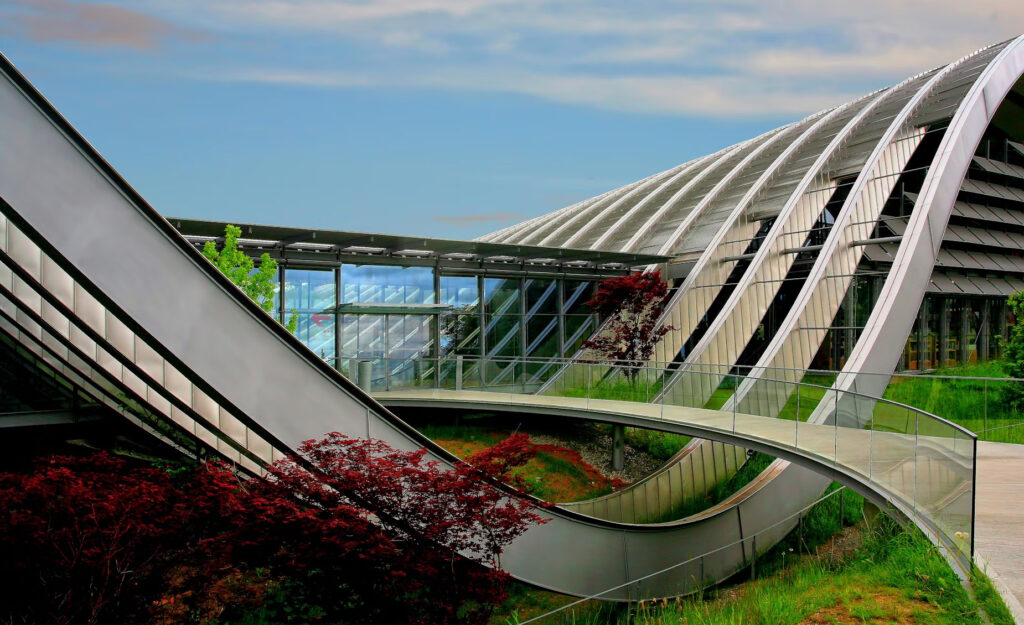As we have explored in our previous articles, financing the shift to sustainable construction is no longer just a policy goal. It’s becoming a financial reality. Investors and lenders are increasingly backing projects that deliver both environmental and economic value, recognising that sustainability and profitability can go hand in hand.
From green bonds funding large-scale developments to green mortgages empowering homeowners, financial innovation is reshaping how we build. And today, we will discuss the growing role of green lending in accelerating the transition to a net-zero built environment.

The Growing Landscape of Sustainable Construction Investment Opportunities
Investment in sustainable construction is rapidly shifting from a niche interest to a mainstream financial priority. This transition is driven by a combination of factors: increasing regulatory pressure, stronger consumer demand for low-carbon buildings, and growing recognition of the long-term financial advantages that sustainable assets offer. For investors, this evolution is opening a diverse range of opportunities.
1. Green Bonds
Organisations issue green bonds to fund projects with clear environmental benefits. In the built environment, they often finance energy-efficient buildings, renewable energy systems, or developments certified under BREEAM or LEED. The green bond market has grown exponentially in recent years, attracting institutional investors eager to align portfolios with ESG criteria. Issuers, in turn, often benefit from a modest “greenium”, a slightly lower yield than conventional bonds, reflecting both high demand and the perceived lower risk of sustainable assets.
2. Green Loans and Credit Facilities
Banks and financial institutions are increasingly offering dedicated green loans and credit facilities for developers and property owners committed to sustainability. These products frequently feature preferential terms, such as lower interest rates or longer repayment periods, rewarding projects that meet defined environmental criteria. Eligibility is usually linked to achieving recognised sustainability certifications, reducing operational energy use, or integrating renewable technologies. Thereby translating environmental responsibility into direct financial benefit.
3. Sustainable Real Estate Funds
Specialist real estate funds focused on sustainability are gaining traction, enabling investors to pool capital and invest in portfolios that meet stringent environmental standards. These funds often target assets that demonstrate strong performance on energy efficiency, carbon reduction, and resource management. For investors, this approach offers diversification alongside measurable environmental impact – a balance increasingly sought in modern investment strategies.
4. Public–Private Partnerships (PPPs)
Governments across the globe are collaborating with private sector partners to finance and deliver sustainable buildings and infrastructure. Such partnerships can unlock significant capital for large-scale projects while combining public objectives with private innovation and efficiency. Examples include energy-efficient public buildings, green urban regeneration schemes, and sustainable transport infrastructure, all of which play a crucial role in advancing national net-zero ambitions.
5. Equity Investments in Green Building Companies
Beyond property investment itself, opportunities are expanding in companies driving the sustainable construction sector forward. These include producers of low-carbon materials, developers specialising in green buildings, and technology firms delivering carbon-tracking and optimisation tools. Equity investment in these enterprises allows investors to participate directly in the growth of the green economy.
Together, these investment avenues reflect a structural shift in financial markets: sustainability has evolved from a moral consideration into a genuine source of long-term value. As demand for greener buildings continues to accelerate, the financial mechanisms supporting their delivery will continue to diversify and mature.
The Rise of Green Mortgages: Empowering Sustainable Homeownership
Green mortgages are becoming a powerful force in transforming the residential market. These specialist loans offer better terms to homeowners who buy, build, or upgrade energy-efficient properties. In doing so, they align individual homeownership with broader environmental goals.
How Green Mortgages Work
Green mortgages typically provide tangible financial benefits:
- Lower Interest Rates: Lenders often offer reduced interest rates, recognising that energy-efficient homes have lower running costs and therefore present a lower credit risk.
- Higher Loan-to-Value Ratios: Some lenders allow higher LTVs, enabling buyers to borrow a greater proportion of the property’s value.
- Increased Borrowing Capacity: Lower utility bills can improve affordability calculations, supporting access to larger loans.
- Cashback Incentives: Borrowers may receive cashback when purchasing or upgrading to certified green homes.
- Simplified Processes: For properties with verified certifications (such as EPC A or B ratings, BREEAM, or LEED), the approval process is often streamlined.
Eligibility Criteria
To qualify, properties must typically demonstrate strong environmental performance. Common requirements include:
- High Energy Performance Certificates (EPCs): In the UK, ratings of A or B are often needed.
- Recognised Green Certifications: Homes meeting standards such as BREEAM, LEED, or Passive House generally qualify.
- Verified Renovations: For existing homes, applicants must evidence measurable energy savings, often confirmed through an energy audit or updated EPC.
Benefits for Homeowners and the Planet
Green mortgages represent a win–win scenario:
- For Homeowners: Lower bills, reduced borrowing costs, enhanced property value, and improved comfort.
- For the Planet: Greater demand for energy-efficient buildings, reduced emissions from the housing sector, and faster progress towards national sustainability targets.
As awareness of both the climate imperative and the financial logic of energy efficiency grows, green mortgages are set to play a central role in the transition to a low-carbon housing market. They empower individuals to make choices that are both environmentally and financially sound, reinforcing the broader movement towards a sustainable built environment.
FAQs
What is sustainable construction?
Sustainable construction is the practice of designing, building, and operating structures in ways that minimise environmental impact, conserve natural resources, and promote health and well-being throughout a building’s entire lifecycle.
What are green bonds?
Green bonds are fixed-income instruments issued specifically to raise capital for projects that deliver environmental benefits, such as renewable energy, energy efficiency, sustainable waste management, and green buildings.
How do green loans differ from traditional loans?
Green loans are financial products that offer preferential terms. For example, lower interest rates encourage borrowers to undertake projects with environmental benefits, such as constructing or refurbishing energy-efficient buildings.
What is a green mortgage?
A green mortgage is a specialist home loan that provides preferential terms, such as reduced interest rates, to borrowers who buy or build energy-efficient homes, or who carry out energy-saving renovations on existing properties.
What are the benefits of a green mortgage for homeowners?
Homeowners with green mortgages can benefit from lower energy bills, potentially reduced mortgage payments, increased property value, improved indoor comfort, and a smaller environmental footprint.
Building a Financially Sustainable Future
Sustainable construction is reshaping how capital flows into the built environment. By integrating climate responsibility into financial strategy, the sector can drive innovation, enhance asset performance, and deliver lasting economic and environmental value. Green finance is not just transforming how we build, it’s defining the future of investment.
